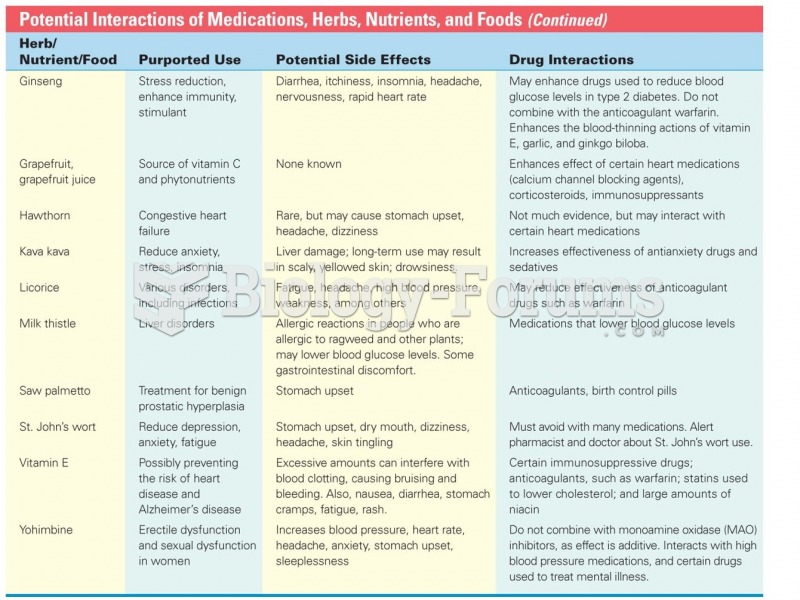Answer to Question 1
Correct Answer: 3
Rationale 1: The placenta has a high metabolic activity level.
Rationale 2: Decreased blood flow to the placenta results in trapped circulating drugs; therefore, higher levels of drug concentration would be present in the fetus.
Rationale 3: Higher concentrations of drugs in the maternal blood lead to higher levels of circulating drug to the placenta.
Rationale 4: Increased blood volume of the mother does not affect amount of drug that is transferred to the fetus.
Global Rationale: Higher concentrations of drugs in the maternal blood lead to higher levels of circulating drug to the placenta. The placenta has a high metabolic activity level. Decreased blood flow to the placenta results in trapped circulating drugs; therefore, higher levels of drug concentration would be present in the fetus. Increased blood volume of the mother does not affect amount of drug that is transferred to the fetus.
Answer to Question 2
Correct Answer: 2
Rationale 1: The increase in blood volume would result in higher concentrations of free drug in the plasma. This would result in an increase in drug response, not decreased effectiveness.
Rationale 2: High estrogen levels can increase hydrochloric acid in the stomach, which can affect the absorption of some medications.
Rationale 3: This is not the best response. If she routinely took the medication before her pregnancy, it is unlikely the medication would have expired.
Rationale 4: This might be an appropriate question after other factors have been established. This is not the best response.
Global Rationale: High estrogen levels can increase hydrochloric acid in the stomach, which can affect the absorption of some medications. The increase in blood volume would result in higher concentrations of free drug in the plasma. This would result in an increase in drug response, not decreased effectiveness. If she routinely took the medication before her pregnancy, it is unlikely the medication would have expired. After other factors have been established it would be appropriate for the nurse to ask how the client has been taking the medications.







